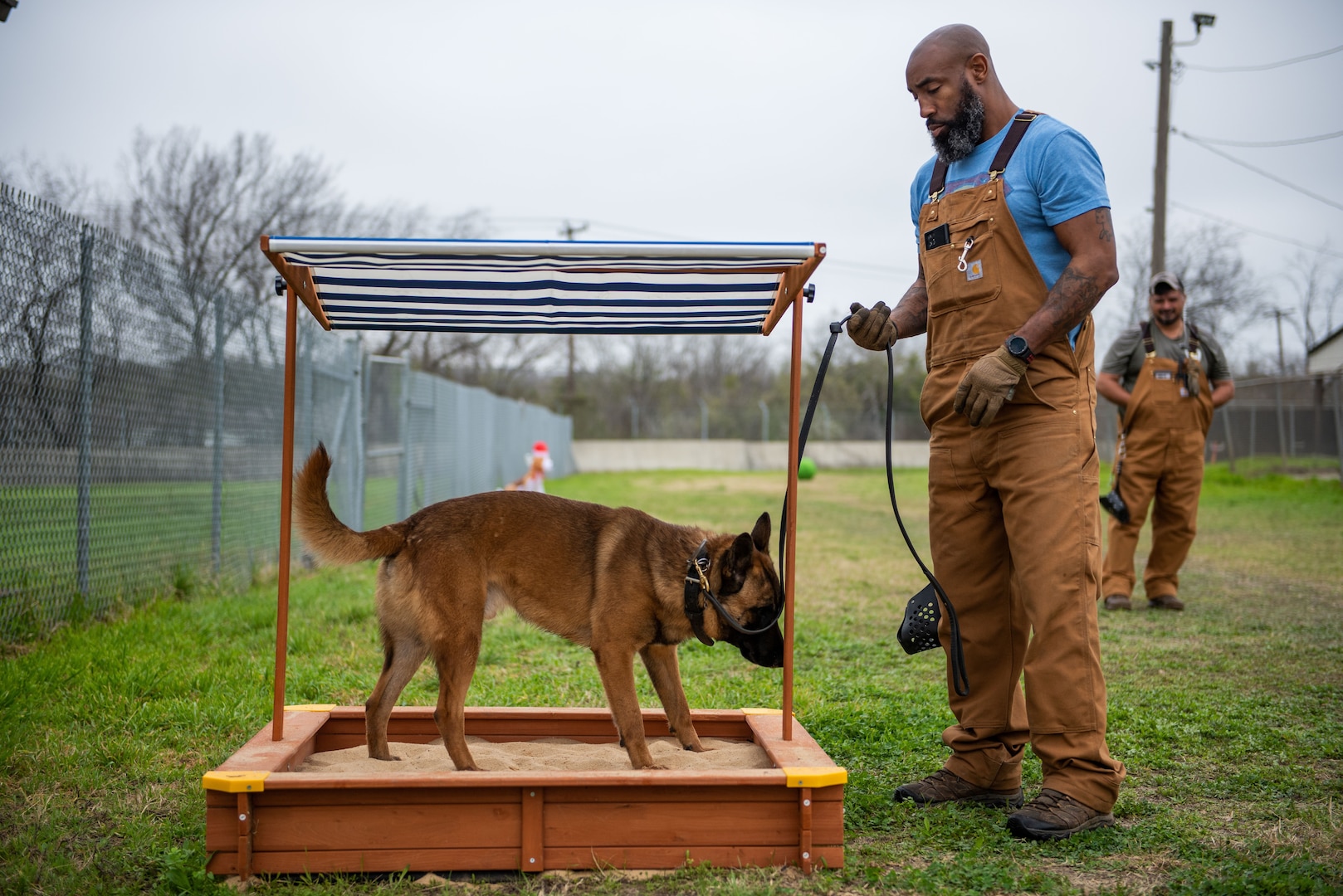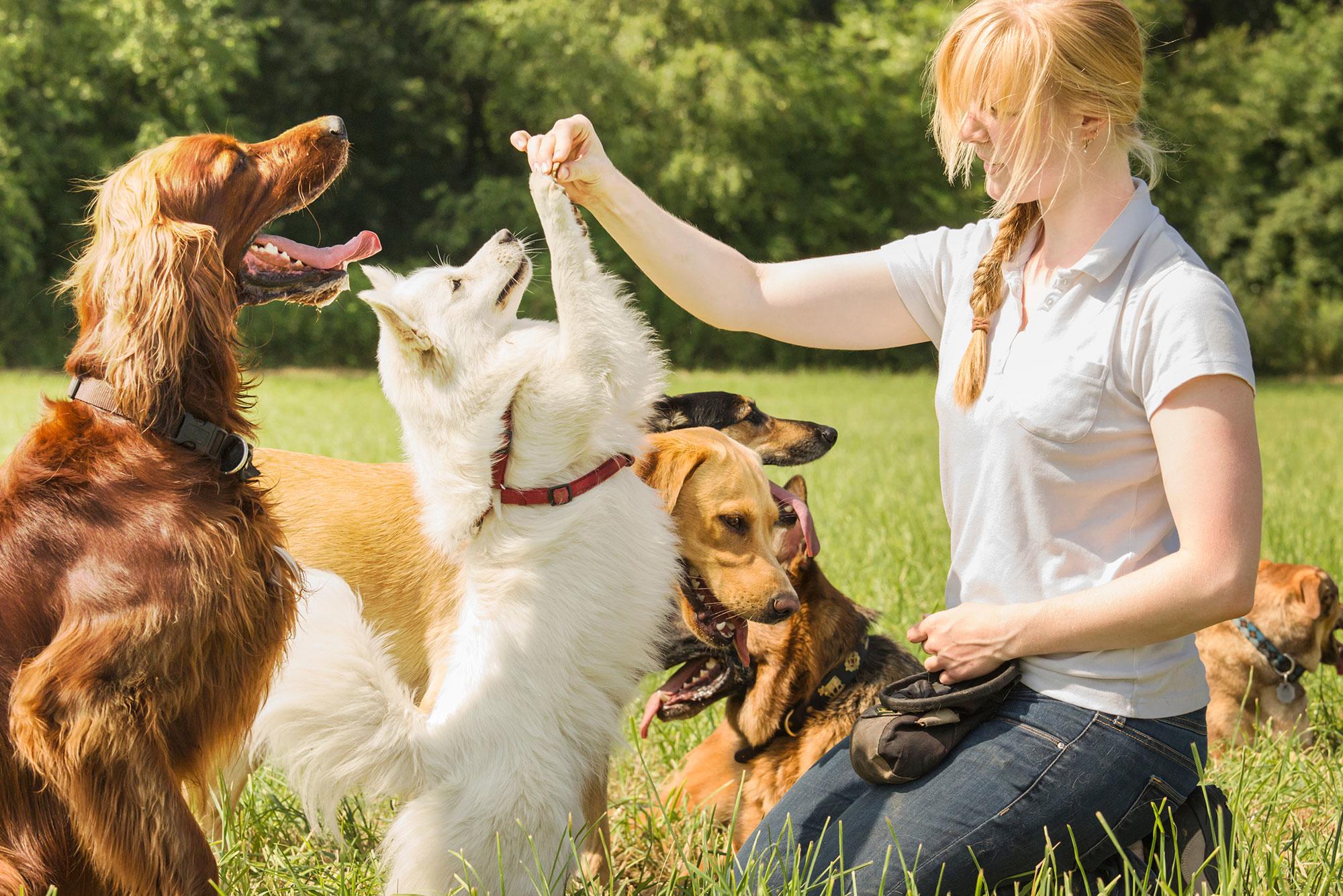Dog Training For Dogs: How to Produce a Calmness and Loyal Pet
Dog Training For Dogs: How to Produce a Calmness and Loyal Pet
Blog Article
Vital Canine Educating Tips for Raising a Well-Behaved Friend
Vital strategies such as early socialization, the establishment of constant commands, and the execution of favorable reinforcement can significantly influence a pet dog's actions and general disposition. Understanding canine habits is critical for customizing training methods that reverberate with specific canines.
Understanding Pooch Habits

Furthermore, socializing plays a vital function in shaping a dog's habits. Direct exposure to different environments, people, and other pets assists dogs create self-confidence and lowers the likelihood of fear-based reactions. Early socializing is specifically important, as experiences during the essential development duration dramatically influence a pet dog's long-lasting habits.
Moreover, comprehending the principles of finding out theory-- such as favorable support, adverse support, and punishment-- can boost training efficiency. Pet dogs are most likely to duplicate actions that produce favorable results. Using consistent, reward-based training approaches cultivates a relying on relationship between the dog and its fitness instructor.

Fundamental Commands to Instruct
Showing basic commands is a necessary foundation for efficient canine training and communication. Dog Training For Dogs. These commands not only aid establish a clear line of communication in between you and your pet dog, but they likewise promote security and etiquette in various circumstances
Start with essential commands such as "Sit," "Keep," "Come," "Down," and "Heel." Each command offers a specific objective; as an example, "Sit" can help calm an ecstatic pet dog, while "Come" is important for guaranteeing your canine returns to you when called.
When presenting a new command, use a clear and regular tone. Slowly raise the period and range as your dog becomes more proficient.
Consistency is key; technique regulates day-to-day to enhance understanding, and guarantee all relative use the same commands to stay clear of confusion. Bear in mind that persistence is essential during this procedure, as various dogs may find out at different paces. Developing these basic commands promotes an unified relationship and sets the phase for advanced training in the future.
Positive Reinforcement Techniques
Favorable reinforcement techniques are highly reliable methods for motivating wanted habits in pet dogs. This training strategy involves rewarding your canine for displaying actions you wish to strengthen, consequently increasing the possibility of those behaviors being duplicated. Rewards can take numerous types, including navigate to this site treats, appreciation, or play, and need to be tailored to what encourages your pet dog most.
Timing is important in favorable reinforcement. Incentives must be given immediately after the desired habits strikes develop a clear organization. For example, if you want official statement your pet to rest on command, reward them as quickly as they sit, ensuring they comprehend what activity is being enhanced.
Consistency is one more crucial element. Dog Training For Dogs. Use the same commands and benefits each time to prevent complication. Progressively, you can eliminate treats for even more periodic incentives, such as spoken praise, to keep the behavior without relying upon continuous exterior support
Furthermore, it is important to continue to be patient and stay clear of penalty, as negative support can cause fear and anxiousness, inevitably preventing training initiatives. By implementing positive reinforcement techniques, you will certainly cultivate a trusting relationship with your pet, leading to a well-behaved buddy.
Socializing and Communication
Socialization and communication are fundamental elements of a pet's advancement that enhance positive reinforcement methods. Very early direct exposure to varied atmospheres, individuals, and other pets is vital for promoting a well-adjusted family pet. This process helps pets develop self-confidence and flexibility, decreasing the probability of behavior problems such as concern or aggression.
Begin socializing during the important developmental home window, commonly in view website between three and fourteen weeks of age. Introduce your puppy to different stimulations, including different noises, sights, and appearances. Register in pup courses or set up monitored playdates with various other pet dogs to urge positive interactions.
As pet dogs grow, remain to expose them to diverse experiences. Activities such as visits to parks, pet-friendly shops, or area events can enhance their social abilities and comfort levels in unfamiliar settings.
Always keep an eye on communications to ensure they are trouble-free and favorable. If your canine shows indications of anxiousness or hostility, smoothly reroute them and enable progressive direct exposure at a comfy rate. Via regular socialization and interaction, you prepared for a balanced, well-behaved companion with the ability of prospering in diverse social scenarios.
Consistency in Training
Developing uniformity in training is crucial for effective interaction in between a pet and its proprietor. Pet dogs grow on routine and clear assumptions, which aids them comprehend what actions is desired.
Uniformity likewise prolongs beyond commands; it includes the rules established within the home. For instance, if a pet is not permitted on the furniture, this rule needs to be imposed at all times. Blended signals can lead to behavior problems, as the pet may end up being uncertain regarding what serves.
Moreover, all member of the family ought to get on the very same page concerning training techniques and commands. If someone awards a habits while another rebukes it, the pet dog may end up being anxious and disoriented.
Verdict
In conclusion, executing important pet dog training ideas fosters a mannerly companion. Early socializing, consistent commands, and favorable reinforcement are crucial components that add to effective training. Developing clear interaction and keeping a regular enhances the canine's understanding of expectations, while patience ensures long-lasting success. Eventually, these methods grow a trusting relationship between the pet dog and its household, promoting an unified living setting and a well-adjusted canine friend (Dog Training For Dogs).
Vital strategies such as early socializing, the establishment of constant commands, and the application of positive reinforcement can dramatically influence a canine's habits and total disposition. Understanding canine habits is critical for customizing training methods that reverberate with individual pets.Comprehending canine actions is important for reliable pet dog training. Pets are more most likely to duplicate habits that generate positive outcomes.Favorable support strategies are very effective methods for motivating preferred habits in canines.
Report this page